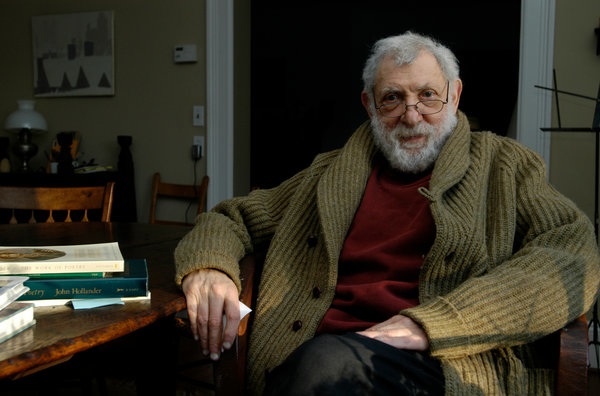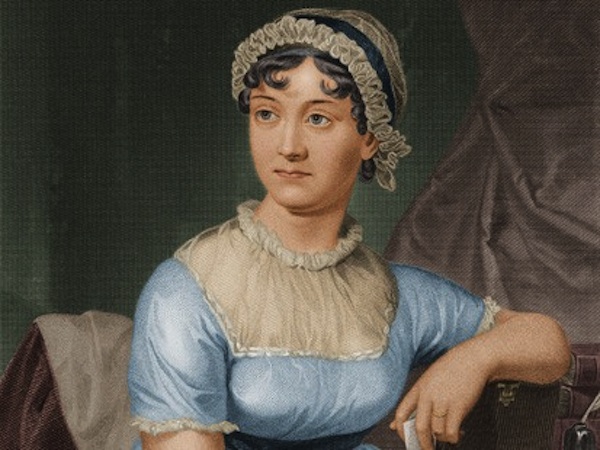Over a half-century ago,Sex On Phone the U.S. banned commercial planes from flying at supersonic speeds over the nation.
The ban protected us from the thunderous, jolting shock waves created when a plane breaks the speed of sound (some 767 mph), events aptly called sonic booms. For those who haven't experienced such an atmospheric blast from the likes of a military craft, it's like the sound of an explosion, NASA explains.
Now, the space agency seeks to tame these booms. On Jan. 12, NASA revealed its much anticipated X-59 aircraft, a nearly 100-foot-long experimental craft that will zoom at 925 mph high above several U.S. communities. (The craft will fly at 55,000 feet; most commercial airliners fly at some 35,000 feet.) Rather than creating a thunderclap, engineers hope the specially-designed craft will produce "barely-audible" thump sounds, perhaps similar to closing a car door.
Ultimately, the aviation industry might one day use this aeronautics innovation to cut flight times across the U.S. or elsewhere in half— though big questions loom around the economic viability of supersonic flight. Still, imagine hopping from Los Angeles to New York City in just two and a half hours.
SEE ALSO: NASA spacecraft keeps on going faster and faster and faster"Today we are witnessing history as we roll out the X-59," John Clark, Lockheed Martin Aeronautics' vice president for engineering and technology, said at the plane's reveal in Palmdale, California.
 Two supersonic aircraft creating shockwaves as they travel through the atmosphere. Credit: NASA
Two supersonic aircraft creating shockwaves as they travel through the atmosphere. Credit: NASA Five years ago, NASA awarded the aerospace company Lockheed Martin, which also makes U.S. fighter jets, a $247.5 million contract to build the X-59 craft. It was supposed to begin flying in 2022. Nevertheless, Lockheed has now rolled the plane out of its Skunk Works hangar in the high California desert. The greater mission is called QueSST, or Quiet SuperSonic Technology.
And with the accomplished space and aeronauticsagency leading the operation, hugely mitigating the boom just might work.
"NASA does serious work. They always have," Bob van der Linden, an aviation expert and supervisory curator at the Aeronautics Department of the Smithsonian Institution’s National Air and Space Museum, told Mashable.
"NASA does serious work. They always have."
"Kudos to NASA for working on this. For trying to find a real solution," van der Linden, who has no involvement with the X-plane mission, added.
Here's the long-anticipated plane. "Behold our stunning X-59," Pam Melroy, NASA's deputy administrator and a former Air Force aircraft commander and test pilot, marveled at the plane's reveal on a Lockheed Martin stage.
 NASA's X-59 plane photographed at Lockheed Martin’s Skunk Works facility. Credit: Lockheed Martin Skunk Works
NASA's X-59 plane photographed at Lockheed Martin’s Skunk Works facility. Credit: Lockheed Martin Skunk Works  An aerial view of NASA's X-59 plane. Credit: NASA / YouTube
An aerial view of NASA's X-59 plane. Credit: NASA / YouTube This Tweet is currently unavailable. It might be loading or has been removed.
To quell the booms an aircraft makes when breaking the sound barrier, engineers employed a number of design innovations on the X-59:
Overall Shape: The X-59's sleek, elongated structure, with a particularly long nose, is designed to "spread out" the shockwaves made when the craft collides with atmospheric molecules. If it works, the plane won't send out violent shockwaves. "Instead, all people will hear is a quiet 'sonic thump' — if they hear anything at all," NASA explained.
Engine: The plane's single, powerful engine is on top of the craft, where the rumble won't be directed toward Earth's surface.
Cockpit / Windscreen: The X-59 is extremely skinny, so narrow that the cockpit, located over halfway back on the plane, has a constricted view of what lies ahead. There's not a forward-facing window. Fortunately, there's a solution: NASA's eXternal Vision System (XVS) provides a high-definition display of the world beyond. "A 4K-monitor serves as the central 'window' allowing the pilot to safely see traffic in their flight path," NASA said.
Wings: Engineers built the aircraft with "swept back" wings, a design meant to reduce drag.
 A graphic rendering of what it will look like flying in the X-59's cockpit with NASA's eXternal Vision System. Credit: NASA
A graphic rendering of what it will look like flying in the X-59's cockpit with NASA's eXternal Vision System. Credit: NASA The X-59 plane will start flying soon, but not immediately over U.S. communities. NASA will build up to those crucial testing flights.
- The first flights: For around nine months, Lockheed Martin will run tests to prove the craft's safety. Then, they'll officially hand the plane to NASA.
- Acoustic validation flights: In 2025, the space agency will fly around a test range over California's Edwards Air Force Base and Armstrong Flight Research Center. The goal is to "prove the quiet supersonic technology works as designed, aircraft performance is robust in real atmospheric conditions, and the X-59 is safe for operations in the National Airspace System," NASA explains.
- Community Response Testing flights: Between 2026 and 2027, NASA will run the real tests. How does it sound? "This will be done by flying over select U.S. cities beginning in 2026 and asking residents to share their response to the sound the X-59 produces," NASA said.
This story will be updated when we learn where those selected cities will be.
 An artist's conception of the X-59 plane on a test flight over land in the U.S. Credit: Lockheed Martin
An artist's conception of the X-59 plane on a test flight over land in the U.S. Credit: Lockheed Martin This Tweet is currently unavailable. It might be loading or has been removed.
The last commercial supersonic jet, the Concorde, last flew over two decades ago, in 2003. It only traveled supersonically across the Atlantic Ocean, and while cutting international travel time in half while cruising at some 1,350 mph, it ultimately failed economically. The plane's route was limited — because it couldn't fly over land. But that was only part of the problem.
"They didn't have enough customers, because of high ticket prices," the Smithsonian's van der Linden explained. "The high ticket prices were caused by the very high fuel consumption." (A round-trip ticket — in decades-old, lower prices — was some $12,000.)
 The nose of an X-59 model in a wind tunnel during testing at Lockheed Martin Skunk Works in Palmdale, California. Credit: Garry Tice / Lockheed Martin
The nose of an X-59 model in a wind tunnel during testing at Lockheed Martin Skunk Works in Palmdale, California. Credit: Garry Tice / Lockheed Martin NASA's QueSST mission won't address the fuel that supersonic engines gulp. Airplane makers, and airlines, will almost certainly need to bring fuel costs down to even attract customers that can currently afford the highest-priced, first class-type seating.
"They still have a long way to go," noted van der Linden. In other words, don't expect to have the opportunity to buy a supersonic ticket for at leastthe next decade.
"If that airplane doesn't make money for the airline, they'll park it."
Some aviation companies are already deeply invested in realizing supersonic flight. The startup Boom Technology, for example, has built an experimental plane that the company plans to test from the Mojave Air & Space Port in the California desert. Boom has also started building the factory that will produce its supersonic airliner, Overture.
But no craft will be able to fly at supersonic speeds across the U.S. until proven technology can turn the boominto a thump. And even then, an airline's ticket prices will have to be reasonable enough for enough people.
"Don't forget it's a business," van der Linden emphasized. "If that airplane doesn't make money for the airline, they'll park it."
This story has been updated with more details about the X-59 plane.
 Don't You Forget About Me by Jason Diamond
Don't You Forget About Me by Jason Diamond
 Brennan Lee Mulligan on the joys of 'Dimension 20: Dungeons and Drag Queens'
Brennan Lee Mulligan on the joys of 'Dimension 20: Dungeons and Drag Queens'
 Racism thrives in the online dating world
Racism thrives in the online dating world
 Sony launches new flagship XM6 headphones: Order them now
Sony launches new flagship XM6 headphones: Order them now
 Big Box by Sadie Stein
Big Box by Sadie Stein
 Robinhood's very bad Super Bowl ad made some people real mad
Robinhood's very bad Super Bowl ad made some people real mad
 John Hollander, 1929–2013 by Sadie Stein
John Hollander, 1929–2013 by Sadie Stein
 Best portable power station deal: Save 44% on the Jackery Explorer 100 v2
Best portable power station deal: Save 44% on the Jackery Explorer 100 v2
 Wordle today: Here's the answer and hints for July 7
Wordle today: Here's the answer and hints for July 7
 Best Samsung deal: Save $60 on 64GB Samsung Galaxy Tab A9
Best Samsung deal: Save $60 on 64GB Samsung Galaxy Tab A9
 Celebrate your COVID vaccine! But not by posting a pic of your card.
Celebrate your COVID vaccine! But not by posting a pic of your card.
 Confessions of an Accidental Book
Confessions of an Accidental Book
 A Partial List of Things John Berryman Found Delicious by Elon Green
A Partial List of Things John Berryman Found Delicious by Elon Green
 How to cancel your Kindle Unlimited subscription
How to cancel your Kindle Unlimited subscription
 Don't You Forget About Me by Jason Diamond
Don't You Forget About Me by Jason Diamond
 Commercial Fan Fiction by Sadie Stein
Commercial Fan Fiction by Sadie Stein
 Dr. Fauci has some simple, lucid Super Bowl advice
Dr. Fauci has some simple, lucid Super Bowl advice
 Shop the Google Pixel Pro 9 for $200 off at Amazon
Shop the Google Pixel Pro 9 for $200 off at Amazon
 Jane Austen Unmentionables, and Other News by Sadie Stein
Jane Austen Unmentionables, and Other News by Sadie Stein
Ted Cruz's vacation and the Mars rover landing coincide in a memeThe Dude Abides by Sadie SteinOne Ring to Rule Them All by Ted ScheinmanAmazon Prime Day deals end soon: See the 19 best deals still availableScientists explain why today's rains and floods are so terribleTonight! by Sadie SteinThe problem with TikTok's dating advice 'if he wanted to, he would'The Sort of Thing That Would Be Difficult to Explain to Someone from Another Planet by Sadie Stein'What We Do in the Shadows' Season 5 review: Fresh blood, fresh laughs, same old vampiresTwo Shades of Wine, and Other News by Sadie SteinA Visit with Evan S. Connell by Gemma SieffPhilosophy Turns Violent, and Other News by Sadie SteinEmpty Vessels by Alice BolinBest Prime Day 2 drone deals: Holy Stone, DJI, moreAn ode to pandemic pen palsWhat is Shudder? Everything you need to know about the horror streaming platform.Best Prime Day 2 drone deals: Holy Stone, DJI, morePhilosophy Turns Violent, and Other News by Sadie SteinHarper Lee Versus the Museum, and Other News by Sadie SteinGoogle Bard now supports 40 languages, customized responses Everything coming to Netflix in October 2020 NASA would really like it if you stared at the moon on Saturday night Titanic 2 could be yours by winning this auction for a Leonardo DiCaprio and Kate Winslet dinner Adorable kitten travels the world in an epic Photoshop battle Facebook catches a China Justin Trudeau and his sultry gaze are on the cover of 'Rolling Stone' Elon Musk announces first Tesla Amazon’s new Echo speaker puts Alexa in an orb Veteran scoutmaster scolds Trump in scathing tweetstorm Netflix's 'Enola Holmes' is a sweet beginner mystery: Movie review When Microsoft Paint looked done for, the internet creatively wept Zuckerberg blasts Trump's ban on trans people serving in the military When will Apple launch the iPhone 12? Here's our best guess. Twitter will ask everyone if they read an article before they retweet it Everyone is tweeting the Boy Scouts values after Trump turns jamboree into full 6 organizations working to get people to vote — and how to help them Amazon's 'Utopia' is dark, mean as hell, and poorly timed: Review Musician claps back at Ed Sheeran trolls, promises to play 'Shape of You' twice In three tweets, Trump bans trans people from military service Have an idea for powering NASA on the moon? You could win $5 million.
1.0355s , 10182.5546875 kb
Copyright © 2025 Powered by 【Sex On Phone】,Miracle Information Network